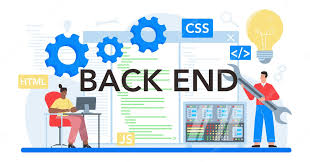In this article
- What is Backend Development?
- Who is a Backend Developer?
- Prerequisites for Becoming a Backend Developer
- Backend Developer Roadmap in 2023
Dear fellow developers and technology enthusiasts,
Welcome to our captivating world of Backend Development! Here, behind the scenes of every innovative application and website, lies the magic that empowers user experiences and enables seamless interactions. Our blog is a gateway to unraveling the mysteries of the backend, where data is processed, databases are managed, and servers come to life. Whether you're a seasoned developer or a curious newcomer, join us on this exhilarating journey as we dive into the intricacies of server-side programming, API design, performance optimization, and more. Together, we'll explore the tools, techniques, and best practices that drive the digital landscape forward. So, fasten your seatbelts, as we embark on a quest to unravel the endless possibilities of backend development. Let's push the boundaries of what's possible and craft the future of technology together!
 |
1. What is Backend Development?
Backend Development refers to the process of building and maintaining the server-side components of a web application or software. It involves all the behind-the-scenes work that makes a website or application function properly and handles tasks such as processing data, managing databases, and ensuring smooth communication between the front-end (the part visible to users) and the server.
In more technical terms, the backend typically consists of a server, an application, and a database. The server is responsible for receiving requests from the client-side (the user's browser) and processing those requests. The application handles the business logic, performs computations, and processes data as required. The database stores and organizes the application's data.
Backend developers work with various programming languages, frameworks, and tools to create robust, secure, and scalable server-side solutions. Some popular backend programming languages include Python, Ruby, Java, PHP, and Node.js. They also interact with databases such as MySQL, PostgreSQL, MongoDB, or others to store and retrieve data efficiently.
2. Who is a Backend Developer?
A backend developer is a software engineer or programmer who specializes in creating and maintaining the server-side components of web applications or software. They are responsible for building the logic, infrastructure, and database that supports the functionality of the application.
Typically, a backend developer works closely with frontend developers and other members of the development team to ensure that the application works seamlessly as a whole. They receive requests from the frontend and process the data to generate appropriate responses, which are then sent back to the frontend for display to the user.
The tasks of a backend developer may include:
1. Writing server-side code: They use programming languages like Python, Ruby, Java, PHP, or Node.js to implement the server-side logic and functionalities.
2. Developing and managing databases: Backend developers design and maintain databases, ensuring efficient data storage, retrieval, and organization.
3. Implementing APIs (Application Programming Interfaces): APIs allow different software systems to communicate and share data, and backend developers create APIs to enable this interaction.
4. Handling server and application scalability: They optimize the backend infrastructure to handle varying levels of traffic and ensure the application can scale with increasing user demands.
5. Security and authentication: Backend developers implement security measures to protect the application and user data, as well as manage user authentication and authorization.
6. Integrating with external services: They connect the application to external services, APIs, or third-party platforms to enhance its functionality.
7. Performance optimization: Backend developers work on optimizing code and database queries to improve the overall performance of the application.
Becoming a backend developer requires a solid foundation in programming and specific skills related to server-side development. Here are the key prerequisites you should consider:
Programming Fundamentals: Start by learning the basics of programming and computer science concepts. Familiarize yourself with data types, variables, loops, conditional statements, functions, and object-oriented programming (OOP) principles.
Web Development Basics: Understand how web applications work and the interactions between the frontend and the backend. Learn HTML, CSS, and JavaScript, as they are fundamental for web development.
Backend Programming Languages: Choose a backend programming language to specialize in. Popular choices include Python, Ruby, Java, PHP, Node.js, and others. Each language has its strengths and is used in different contexts, so research which one aligns with your interests and project requirements.
Database Knowledge: Learn about databases and how to work with them. Explore SQL (Structured Query Language) for relational databases like MySQL, PostgreSQL, or learn NoSQL databases like MongoDB for non-relational data storage.
Web Servers and APIs: Understand web servers (e.g., Apache, Nginx) and how to handle HTTP requests and responses. Familiarize yourself with RESTful API design principles to create efficient and scalable APIs.
Version Control: Gain proficiency in version control systems like Git. Understanding version control is essential for collaborative development and managing code changes effectively.
Backend Frameworks: Explore backend frameworks that are popular for your chosen programming language. For instance, Django and Flask for Python, Ruby on Rails for Ruby, Spring for Java, Express.js for Node.js, etc. These frameworks provide tools and abstractions to speed up development.
Security Principles: Learn about common security vulnerabilities and how to implement secure authentication, data protection, and handling user input to prevent common exploits like SQL injection and Cross-Site Scripting (XSS).
Testing and Debugging: Practice writing tests and learn debugging techniques. Testing helps ensure code quality and helps catch bugs early in the development process.
Deployment and Cloud Services: Familiarize yourself with deployment processes and cloud platforms like AWS, Azure, or Google Cloud. Understanding how to deploy and manage applications in the cloud is essential for modern web development.
Continuous Learning: Keep up with the latest trends, tools, and best practices in backend development. The tech industry evolves rapidly, and continuous learning is crucial for staying relevant and improving your skills.
Projects and Portfolio: Work on personal projects or contribute to open-source projects to build a portfolio that showcases your backend development skills. Having tangible examples of your work can be valuable when seeking job opportunities.
thanks for reading this article,
share and give us feedback for new topics and better articls,
regards
Unknown Tech



